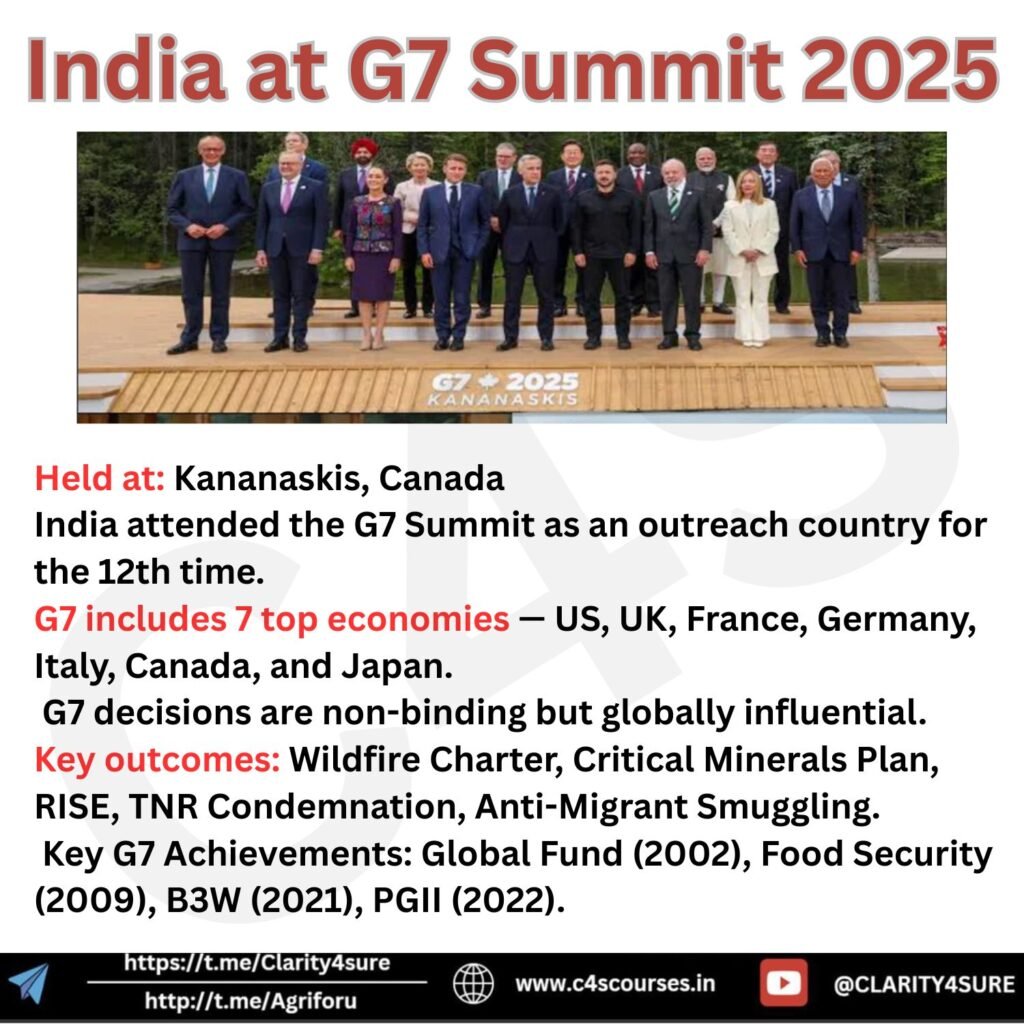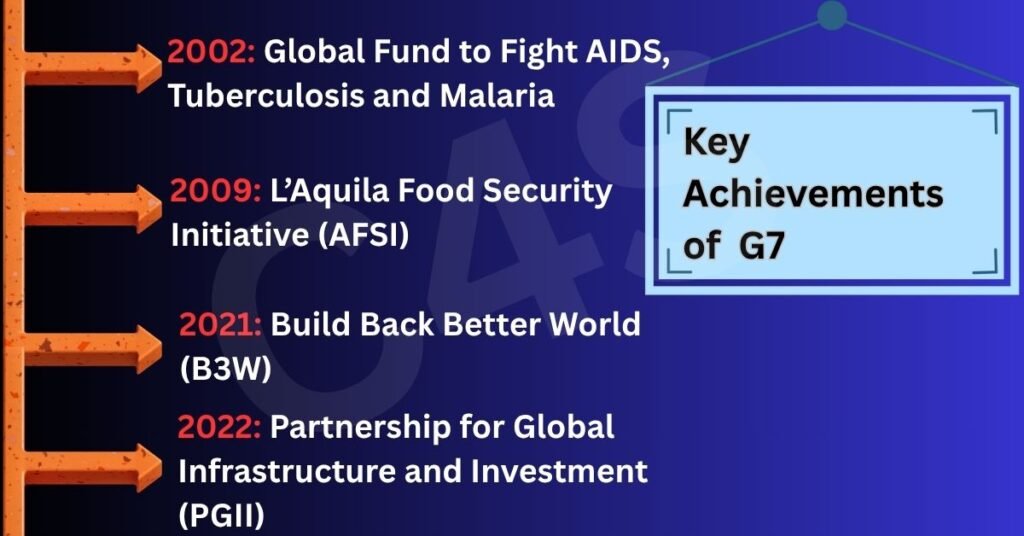
Why in News?
India’s Prime Minister attended the 51st G7 Summit at Kananaskis, Canada. Though India is not a part of the G7 grouping, it has been invited for the global summit each year for the last six years and twelve times in total as an outreach country.
- The President of the European Commission was invited to attend the G7 Summit for the first time.
What is G7?
About:
The G7 (Group of Seven) is an informal group of the world’s most developed and powerful economies — France, Germany, Italy, the UK, Japan, the US, and Canada.
The European Union (EU) also takes part, even though it’s not officially counted as a member. Global organizations like the IMF, World Bank, and United Nations are often invited to join the discussions.
Origin & Evolution:
The G7 started in 1975 as the G6 (US, UK, France, West Germany, Japan, and Italy). It was created to deal with the oil crisis and economic problems that followed in 1973.
Canada joined in 1976, making it the G7.
In 1997, Russia joined, turning it into the G8. But after Russia annexed Crimea in 2014, it was removed, and the group returned to being the G7.
The year 2025 marked the 50th anniversary of the G7.

Nature of G7:
- Informal Grouping:
The G7 is not based on any formal treaty. It doesn’t have a permanent office, secretariat, or official staff. It’s more of a discussion platform for top world leaders. - Rotating Presidency:
Each year, one of the member countries takes turns to host the summit and lead the talks. - Decisions by Consensus:
The G7 doesn’t make binding laws or rules. Instead, all decisions are made with mutual agreement. Even without legal power, its decisions matter because of the strong economic and political influence of its members.
Economic Significance
- The G7 countries together make up about 40% of the global economy, even though they only have 10% of the world’s population.
- They account for 36% of the world’s total power generation capacity.
- They use 30% of the world’s total energy.
- They are responsible for 25% of energy-related carbon dioxide (CO₂) emissions globally.
What are the Key Outcomes of the G7 Summit?
Kananaskis Wildfire Charter
This agreement focuses on tackling the threat of wildfires using scientific research, local actions, and nature-based solutions. It supports the global goal set in the Glasgow Leaders’ Declaration (2021) to stop and reverse deforestation and land degradation by 2030.
G7 Critical Minerals Action Plan
This plan aims to expand and diversify the production of critical minerals, encourage more investment, support local economic benefits, and promote innovation. It builds on the 2023 Five-Point Plan for Critical Minerals Security, which was also supported by India.
RISE Partnership Support
The G7 countries also agreed to strengthen the World Bank-led RISE (Resilient and Inclusive Supply Chain Enhancement) Partnership, which is designed to make global supply chains more secure and inclusive.
Condemnation of Transnational Repression (TNR)
The G7 strongly condemned Transnational Repression, which happens when a country or its agents try to intimidate, harm, or control people living in other countries, especially those who oppose their regimes.
Preventing Migrant Smuggling
The G7 committed to stopping migrant smuggling by working together under the G7 Coalition to Prevent and Counter the Smuggling of Migrants and following the 2024 G7 Action Plan focused on this issue.
Key Achievements

















